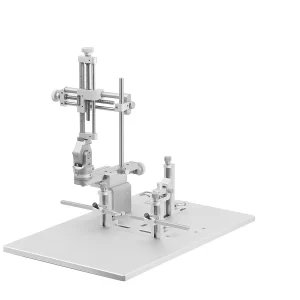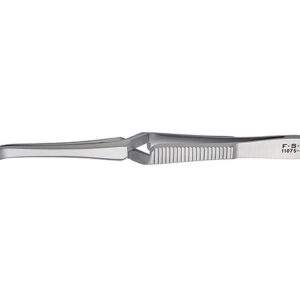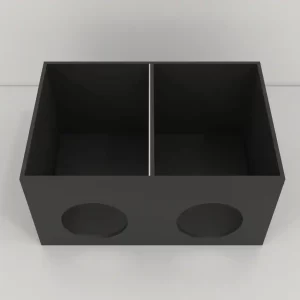
Virtual Reality: Healthcare and Biomedical Research
Overview Virtual reality was first experienced as the world’s first flight stimulator Link Trainer by Edwin Link (1929) and later as the interactive theatre ‘Sensorama’

Funding has never been easy to obtain. Each year, the National Institute of Health (NIH) receives thousands of applications for competing and non-competing Research Project Grants (RPGs). The NIH is part of the United States Department of Health and Human Services that supports over 25000 organizations worldwide. In 2017, the NIH received over 50,000 RPG applications, of which only about 640, involving 11,000 principal investigators, secured funding (Lauer, 2018).
Rejection!
Thousands of applications do not qualify for funding due to formatting and structural errors that can easily be avoided with guidance and preparation.
Grant applications are a window of opportunity for the researcher; these present your work to people who matter and decide whether they want to invest in the project. The manner in which you present your application is absolutely crucial. There are steps a potential grant writer can take to ensure their proposals do not end up in the bin, but in fact, make it to the top of the stack.
Before you start typing your grant application, read the instructions – all of them. This may seem like a daunting task since NIH grant booklets comprise 200+ pages. It may be tempting to skim through them; however, it is critical for a grant application to follow specifics such as file names, font size, citations, data limit, etc. Your application can be returned if the format does not follow instructions. Inouye and Fiellin (2005) reported that of all the grants submitted to the NIH; more than 20% of the rejected applications had avoidable formatting errors for which instructions were clearly given.
The NIH provides clear guidelines of what should and should not be included in the grant proposal. It may take a little while to read, but it is worth the time.
Grant writing is an arduous process; writing a proposal is much harder than conducting the research per se. It is therefore imperative to start early; particularly because there is a hyper-competition among the biomedical researchers. In the last 20 years, applications to the NIH have increased quadruple (Couzin & Miller, 2007). However, graduate students and early-career scientists have an inherent edge over senior investigators and seasoned veterans in terms of grant mechanisms. The NIH early-career awards require little or no preliminary data which puts the young workforce, lacking ample experience, into a fortuitous position. Funding mechanisms for early-career awards depend on the potential of the candidate which in turn depends on:
While crafting a winning grant proposal, here are a few things to keep in mind:
The average time for grant proposal writing is between 3-months to 1-year (Inouye and Fiellin, 2005). For early-career scientists, starting early is additionally beneficial because, in the absence of preliminary data, 3 months would be more than sufficient for the grant proposal. With preliminary work, the process becomes lengthier than a year. Experts advise keeping at least a one-month gap between the completion and submission of the application so that you will always have time to revisit, re-touch, and perfect the application. A detailed grant has a pleasant and professional appeal to it.
In order to write a grant proposal of high quality, it is important to acclimate yourself to the structure. A grant has the following structure:
The grant submission process is confusing and can seem daunting to the first-timer. To tackle the confusion, every institution has administrative offices and trained personnel possessing a wealth of knowledge to assist the applicants in filling out the form, collecting required documents and signatures, and double-checking the proposal. They even provide technical assistance and logistics should the research be multi-centric.
Sponsored research offices receive numerous applications and have their deadlines too. You should contact them at least a month before the deadline so that they have ample time to review the application in detail. Normally, they take 7-10 days to review the application and obtain institutional approval.
Given the reduction in research budgets and application success rates, it has become extremely important to craft an articulate and outstanding grant proposal to secure adequate funding and improve the odds of success. The grant application process has become extremely detail-oriented; writing a stellar proposal has become more important than ever. Your proposal should be well-written, immaculate, proofread, and nothing short of perfect. Organization and neatness have an impact on the reviewer. The application should be well-organized and give the impression that the author has conducted a thorough review before submission.
The grant should also meet 5 NIH Review Criteria. This can be achieved by getting feedback early in the drafting process. The reviewer, preferably an experienced grant writer or an editor who specializes in health sciences, can point out stylistic, organizational, grammatical, and formatting errors as well as highlight the gaps in the structure and flow of the content.
Furthermore, try using figures, charts, and tables frequently in the application – the more, the better. As a general rule, tables and figures are relevant for all sections of the grant application. Tables and figures help crystallize the aims, study designs and methods, and calculations. These not just demonstrate your organizational skills but also save the time of the reviewers who are bombarded by the applications.
Other tips to maximize your chances of scoring the award include:
Old or new, grants basically have the same structure. If you have written a grant application earlier, there is no need to recreate the new application from scratch. You can ingeniously insert sections into the new proposal. This will save substantial time. However, caution is recommended to ensure that the integrated paragraphs are harmonious with the content and the structure of the application. Meanwhile, a literature search should be done simultaneously to include any updated information. The grant should appear scholarly and up-to-date.
Finally, you ought to look at your grant through the reviewer’s critical eye to identify the faults and shortcomings. This will help you fix the remaining glitches in the application. Remember, reviewers, are busy people with lives and careers outside the piece of paper. Their time is of the essence, and you do not want them to work harder than they have to.
As mentioned earlier, most of the reviewers are concerned mainly with the abstract of the grant. This gives them a fleeting look at the whole proposal. The first paragraph of every section should also serve as the abstract, the last as the conclusion and restatement of the main idea.
The ability to craft and articulate a technical grant is artistry. The language should be elegant and appealing yet strictly focused. The grant should follow the format. Use plenty of white spaces, i.e., by inserting flow charts, timelines, bullet points, randomization schemes, and preliminary data. A cascade of redundant text is tiring to the eyes. The review does not like to be overwhelmed with an endless flow of texts.
Further information and details about grant tutorials are available here.

Overview Virtual reality was first experienced as the world’s first flight stimulator Link Trainer by Edwin Link (1929) and later as the interactive theatre ‘Sensorama’

Episodic Memory Human long-term memory can be broadly classified into declarative memory and procedural (implicit) memory; The former category involves conscious and intentional recollection of

Self-Awareness Consciousness by most of the scientific community is recognized as an outward awareness of one’s environment and body, while self-awareness is the recognition of

Need Digital Health Services for your research? Click here Questionnaires, Data Forms & Research Medical research and data go hand in hand. Often, to






DISCLAIMER: ConductScience and affiliate products are NOT designed for human consumption, testing, or clinical utilization. They are designed for pre-clinical utilization only. Customers purchasing apparatus for the purposes of scientific research or veterinary care affirm adherence to applicable regulatory bodies for the country in which their research or care is conducted.